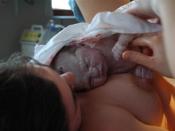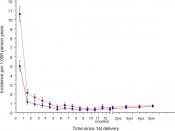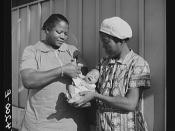Postpartum Mood Disorder
Extreme sadness and crying, shame, anger, lack of self confidence, suicidal thoughts, and infanticidal thoughts - these are feelings not usually associated with the birth of a child; however for 400,000 women a year, this is the reality of the postpartum period. It is estimated that one in three new mothers will develop symptoms of postpartum mood disorders. Postpartum mood disorder is a mental health disorder striking within the first year of giving birth. All women of childbearing age should be aware that a postpartum mood disorder can strike any woman after delivery regardless of whether they are a first-time mom or have had previous pregnancies. Postpartum mood disorders can be classified according to the severity and intensity of the symptoms as the baby blues, postpartum depression and postpartum psychosis.
Postpartum blues, often referred to as the baby blues, affects up to 80% of all new mothers, with onset usually between three and fourteen days postpartum.
The baby blues, which will usually resolve itself, stems from several rapid and major changes in a new mother's life, such as, a decrease in hormones, the body's production of breast milk, and the transition from the hospital to home. Postpartum mothers who experience the baby blues may experience excessive crying and sadness, increased irritability and frustration. These feelings, intermixed with periods of pleasure, may come and go for a period of up to fourteen days. Though not considered an illness, up to 20% of women with the baby blues go on to develop postpartum depression.
Postpartum depression affects up to 25% of new mothers. Symptoms can be exhibited right away, in several months, or up to a year after delivery. Women suffering from postpartum depression may have physical and emotional symptoms. For example, many woman report headaches, fatigue,


